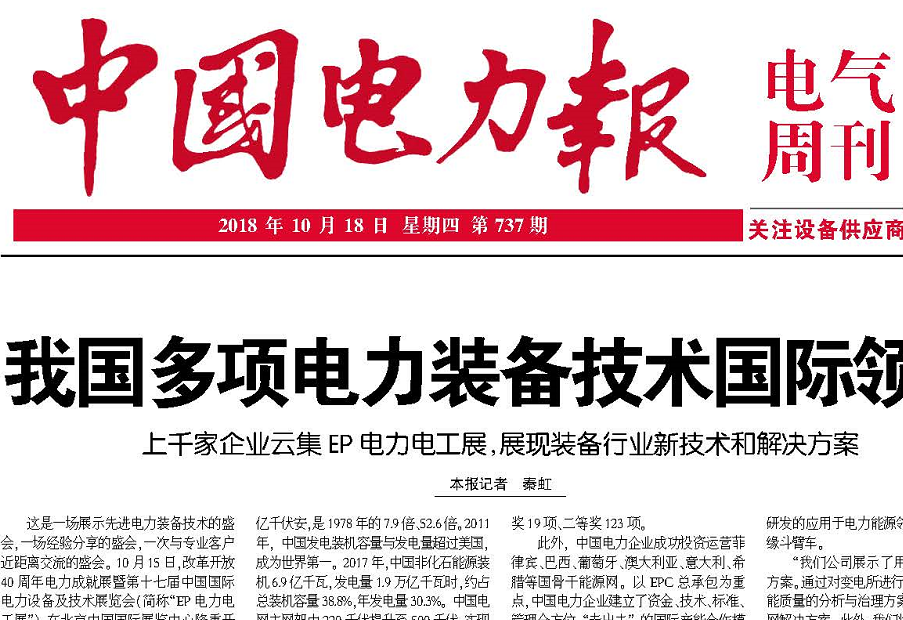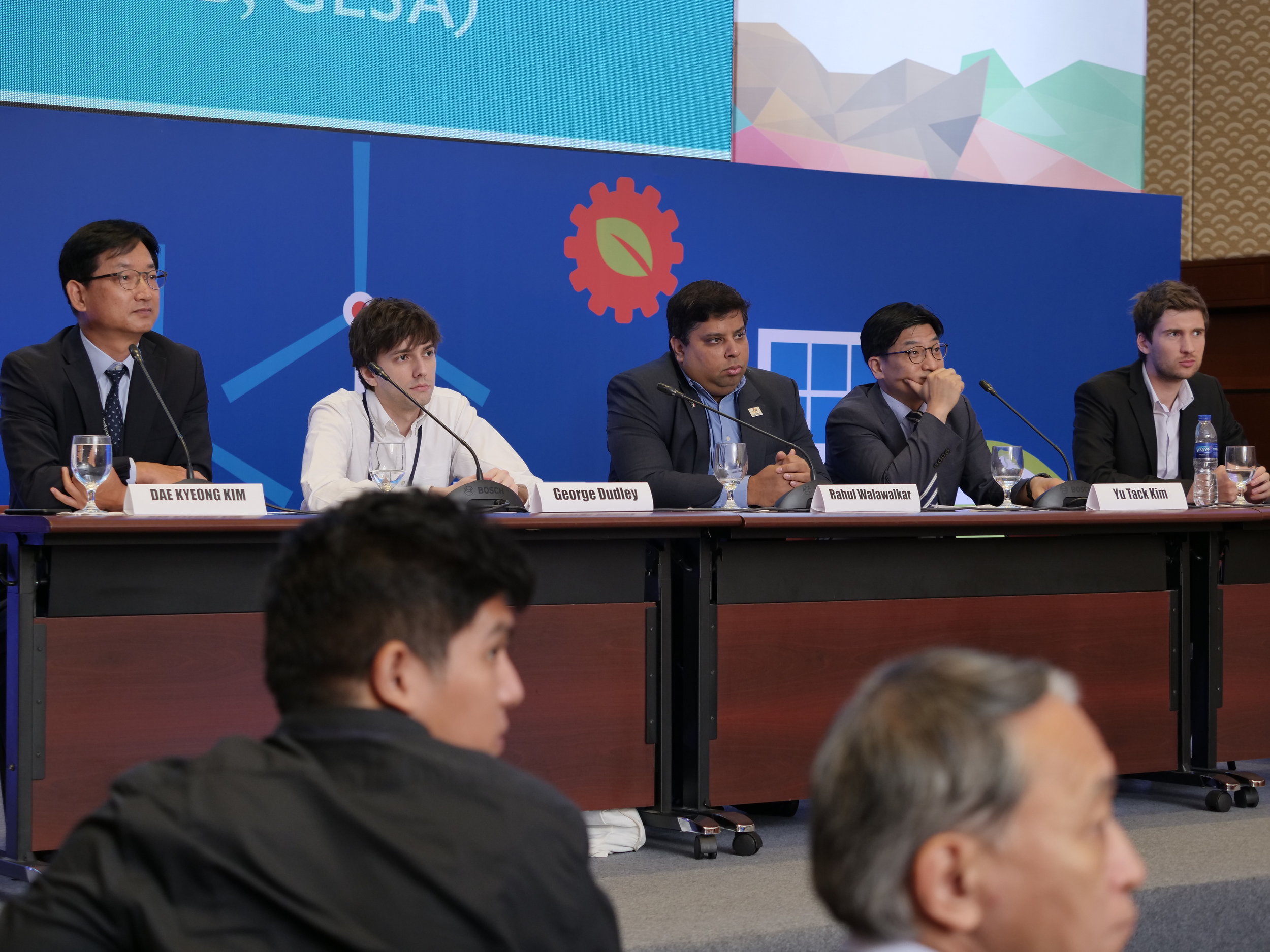CNESA’s tracking of the global energy storage market reveals that over the past two years, many large energy industry players have purchased energy storage companies. Examples include Enel’s purchase of Demand Energy, Total’s purchase of Saft, and Aggreko’s purchase of Younicos. Such purchases have continued through 2018. According to CNESA tracking, at least ten battery energy storage companies were acquired by large energy enterprises in the first nine months of 2018. Two notable examples include ENGIE’s purchase of French microgrid and energy storage company Electro Power Systems (EPS), and international inverter leader SolarEdge’s purchase of Korean energy storage solutions provider Kokam. Below, we take a look at these two case studies to discuss how these two major energy companies have taken different strategies to enter the energy storage industry.
1. ENGIE purchases EPS
ENGIE, formerly known as GDF Suez, originates from the July 22, 2008 merger of Gaz de France and Suez. On April 24, 2015, GDF Suez changed its name to ENGIE, focusing on natural gas, electricity, and energy services as its three main business areas. The company is currently devoted to becoming a leader in the global energy transition. In recent years, the company has been continuously exploring the use of energy storage as part of its efforts to transition to become a low-carbon energy and solutions provider.
In May of 2016, ENGIE purchased 80% stock equity in American industrial-commercial energy storage systems provider Green Charge Networks (GCN), marking a big leap into the energy storage sector. After the purchase, GCN changed its name to “ENGIE Storage,” continuing to provide its industrial-commercial behind-the-meter solutions in the United States while also using ENGIE’s foundation in the traditional energy sector to expand its products to grid-scale storage. One example of such is ENGIE North America’s 3MW/6MWh grid-scale energy storage project developed in conjunction with Massachusetts utility Holyoke Gas & Electric (HG&E) in September 2017. The project’s equipment, construction, and maintenance was provided by GCN. At the time of its launch, it was also the largest grid-scale energy storage project in Massachusetts.
If ENGIE’s purchase of GCN was made in order to capitalize on a strong industrial-commercial energy storage market in the United States, then ENGIE’s January 2018 purchase of 51% stock in French microgrid manufacturer Electro Power Systems (EPS) can be seen as a move to expand its energy storage business more comprehensively and at a larger geographic scale. EPS focuses on microgrid projects and energy storage project development, construction, and operations. Its energy storage projects are concentrated in European countries such as Italy and Spain as well as Africa. ENGIE’s purchase of EPS strengthens its abilities to provide distributed energy and microgrid solutions while helping the company further its goal of becoming a low-carbon solutions provider. For EPS, the purchase has also provided a channel and support to expand globally. According to CNESA’s Global Energy Storage Project Database, following ENGIE’s purchase of EPS, ENGIE quickly helped EPS acquire a bid for a 35MW solar PV plus 45MWh energy storage microgrid project and 30 year PPA in the Pacific island of Palau.
2. SolarEdge Purchases Kokam
SolarEdge was founded in 2006 and is headquartered in Israel. The company is a leading global provider of an intelligent solar PV power optimization and inverter system solution. The company’s main business is the R&D, production, and sales of optimized DC PV inverter systems. Such a system includes a power optimizer, inverter, and cloud monitoring system. SolarEdge’s products are utilized mainly in distributed PV systems, including residential rooftop power stations and industrial-commercial distributed power stations. SolarEdge began bringing its products to energy storage applications in 2015.
According to CNESA’s Global Energy Storage Vendor Database, prior to 2018, SolarEdge’s primary advantage was in its inverter business line. The company collaborated on energy storage projects with major international battery manufacturers such as LG Chem and Tesla. LG Chem’s 400V RESU10H high voltage residential storage series, featuring 7kWh and 9.8kWh capacities, utilizes SolarEdge’s Storedge single-phase DC inverter. The product has been sold throughout the North American market.
Since 2018, SolarEdge has begun horizontal expansion into energy storage. In May, SolarEdge launched a VPP software platform in preparation for the move toward smart management systems. In October, SolarEdge purchased 75% of shares in South Korean battery manufacturer Kokam for the price of 88 million USD, with plans to purchase the remaining shares in the future. The move allows SolarEdge to now provide batteries as part of its business line. Aside from providing some energy storage projects with systems integration and turnkey systems, Kokam also provides a full line of batteries, including high-power nickel-magnesium-cobalt (NMC) Li-ion batteries. According to CNESA tracking, Kokam already possesses over 700MWh of Li-ion deployed in the aerospace, electric vehicle, and energy storage sectors. The purchase of Kokam has increased SolarEdge’s product line, while also ensuring that SolarEdge inverter solutions and Kokam battery products will be able to integrate seamlessly.
3. CNESA Summary
ENGIE and SolarEdge’s experiences demonstrate how companies often take different strategies to enter the energy storage sector. ENGIE’s choice of purchasing GCM was in part due to recognizing the company’s existing accumulation of technology and projects, though more importantly was a recognition of the industrial-commercial behind-the-meter storage market in the United States. ENGIE’s purchase of EPS also shows that the company also has an optimistic view of future distributed energy storage and microgrid markets in Africa and the Pacific. In contrast, SolarEdge has looked more towards technology integration, starting with early collaboration with major battery manufacturers on energy storage projects and accumulating experience, to the recent purchase of battery product supplier Kokam, allowing SolarEdge to “fill in the gaps” in its own systems solutions services. SolarEdge has taken steps toward becoming a provider of a complete set of energy storage solutions.
Author: Yue Fen Translation: George Dudley


















































